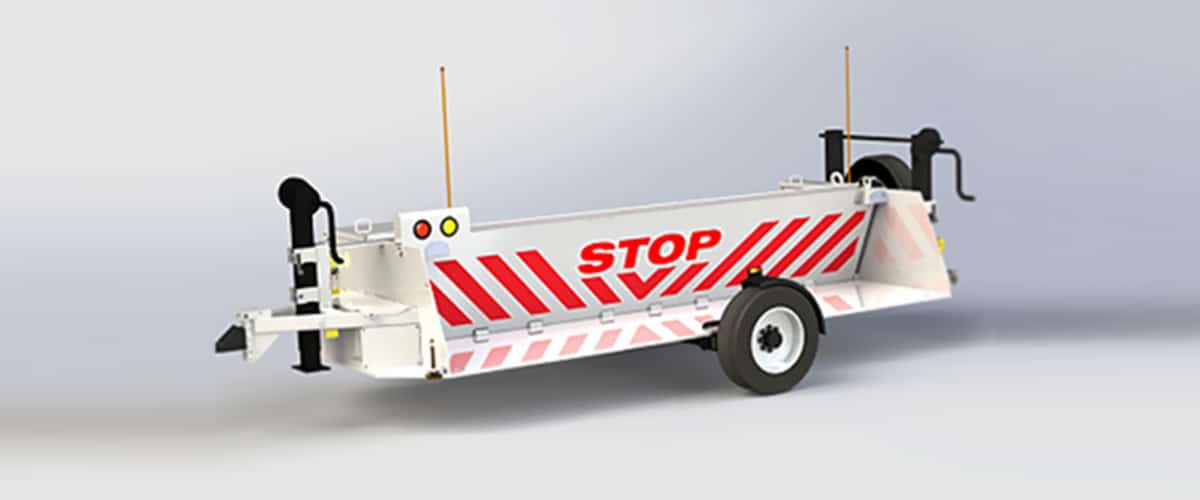Some Known Questions About Wedge Barriers.
Table of ContentsThe Basic Principles Of Wedge Barriers The Buzz on Wedge Barriers

Wedge Barriers Fundamentals Explained
The continuing to be force used to
the cam to deploy release wedge plate 16 may be provided supplied an electromechanical actuator 84 or other various other. The springtime assembly 54 and the actuator 84(e. Wedge Barriers. g., electromechanical actuator)might run with each other to translate the cam and lift the wedge plate 16.
As pointed out above, the spring setting up 54 exerts a continuous pressure on the web cam, while the electromechanical actuator might be regulated to exert a variable force on the camera, thus enabling the training and reducing( i. e., releasing and withdrawing )of the wedge plate 16. In particular personifications, the continuous force applied by the spring assembly 54 may be flexible. g., electromechanical actuator) is impaired. As will certainly be appreciated, the springtime assembly 54 may be covered and secured from particles or various other components by a cover plate(e. g., cover plate 68 revealed in FIG. 4) that may be substantially flush with the elevated surface area 38 of the structure 14. As mentioned above, in the deployed setting, the wedge plate 16 serves to block accessibility or travel beyond the barrier 10. The obstacle 10(e. g., the wedge plate 16 )might obstruct pedestrians or vehicles from accessing a property or pathway. As gone over above, the obstacle 10 is affixed to the support 30 secured within the foundation 14,

front braces 71. Consequently, the linkage settings up 72 may pivot and revolve to allow the collapse and expansion of the affiliation assemblies 72 during retraction and release of the bather 10. The link assemblies 72 cause activity of the wedge plate 16 to be restricted. As an example, if This Site a lorry is taking a trip towards the released wedge plate 16(e. For instance, in one circumstance, the safety legs 86 might be expanded duringmaintenance of the barrier 10. When the security legs 86 are released, the safety and security legs 86 sustain the weight of the wedge plate 16 versus the surface 12. As an outcome, the lifting mechanism 50 may be deactivated, serviced, gotten rid of, replaced, and so forth. FIG. 5 is partial viewpoint view of a personification of the surface-mounted wedge-style obstacle 10, illustrating the camera 80 and the camera surface areas 82 of the training device 50. Particularly, 2 webcam surface areas 82, which are described as lower camera surfaces 83, are positioned listed below the cam 80. The reduced web cam surface areas 83 may be fixed to the surface 12 (e. For instance, the lower camera surfaces 83 and the placing plate 85 may develop a single item that is safeguarded to the support 30 by bolts or various other mechanical fasteners. Additionally, 2 web cam surfaces 82, which are described as try this upper camera surfaces 87, are positioned above the cam 80 and combined to (e. In other personifications, stepping in layers or plates might be placed in between the surface 12 and the reduced webcam surfaces 83 and/or the wedge plate 16 and the top cam surfaces 87 As mentioned above, the webcam
80 translates along the camera surfaces 82 when the wedge plate 16 is lifted from the retracted placement to the released setting. Additionally, as discussed above, the spring setting up 54 (see FIG. 3 )might supply a force acting on the webcam 80 in the direction 102 through springtime rod 58, which may minimize the pressure the electromechanical actuator 84 is called for to relate to the cam 80 in order to actuate and raise the wedge plate 16. 1 )to the deployed setting(see FIG. 4). As revealed, the camera 80 consists of track wheels 104(e. g., rollers), which call and convert along the cam surfaces 82 during operation.